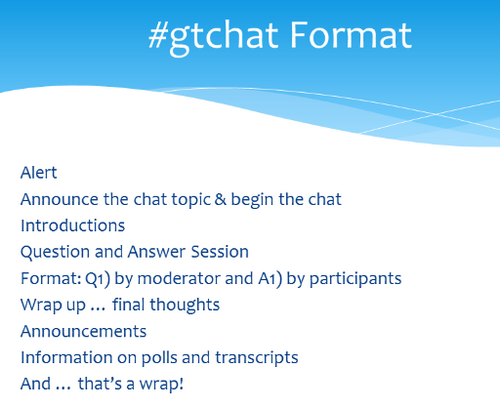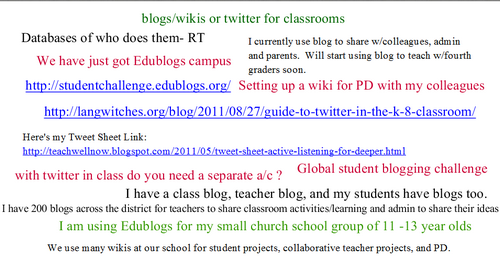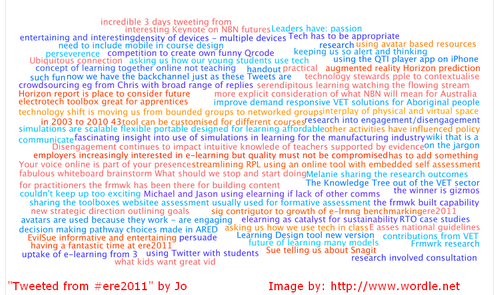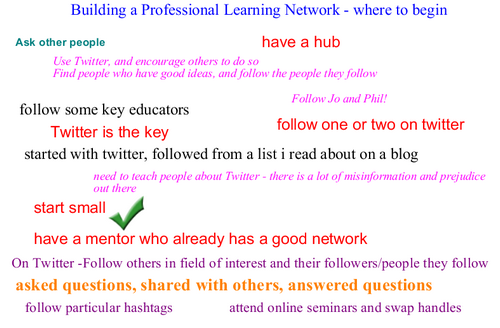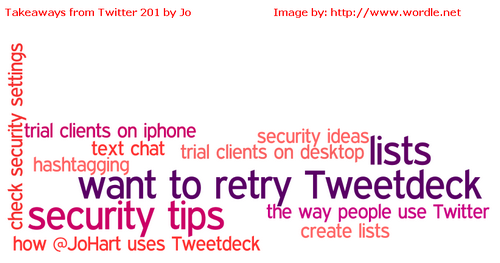I was honoured to be named in company with @cybraryman1 @gtchatmod @GiftedHF @murcha as one of @jofrei ‘s top five “Go to” Educators in the #TwitteratiChallenge. All of @jofrei‘s other top five and @jofrei herself have been part of my PLN for over five years.
I don’t usually do these sorts of “round robin” things but on this occasion I accept the #TwitteratiChallenge and will name my top five “Go to” Educators – the rules prevent me including any of the educators named by @jofrei, or indeed Jo herself!
The conditions of the challenge are posted on Mary Myatt’s blog at
http://marymyatt.com/blog/2015-05-03/the-twitterati-challenge
Here they are:
Started by by Ross (never known to nap) @TeacherToolkit – “In the spirit of social-media-educator friendships, this summer it is time to recognise your most supportive colleagues in a simple blogpost shout-out. Whatever your reason, these 5 educators should be your 5 go-to people in times of challenge and critique, or for verification and support”
There are only 3 rules.
- You cannot knowingly include someone you work with in real life.
2. You cannot list somebody that has already been named if you are already made aware of them being listed on#TwitteratiChallenge.
3. You will need to copy and paste the title of this blogpost and (the rules and what to do) information into your own blog post.
What to do?
This what to do:
1. Within 7 days of being nominated by somebody else, you need to identify colleagues that you rely regularly go-to for support and challenge. They have now been challenged and must act and must act as participants of the #TwitteratiChallenge. - If you’ve been nominated, please write your own #TwitteratiChallenge blogpost within 7 days. If you do not have your own blog, try @staffrm.
5. The educator that is now (newly) nominated, has 7 days to compose their own #TwitteratiChallenge blogpost and identify who their top 5 go-to educators are.
So here are my choices in no particular order – because no way could I choose a “top of the list” person:
@suewaters Sue was my PLN mentor when first started to dip a toe in the water of PLNs back in 2008, she is so often my first “port of call” when something online doesn’t make sense, as well as being my edublogs saviour when I have problems with my blog. We do live in the same state (WA) of Australia and do know one another “for real” and not just virtually but we don’t work together so I hope this is OK.
@shellterrell Shelly (based in the US) has been part of my PLN almost as long as Sue! She came to some of our early webinars and also presented several. I participated in some of the early #Edchats the twitter #chats initiated originally by Shelly and a couple of others so Shelly has been a long time colleague and I am so excited that I will be meeting her in real life when she visits Australia in early June – I only wish she could bring #RoscoThePug with her!
@mgraffin Another WA tweep – we communicated extensively online before we met “for real”. Michael has been in my PLN since about 2010 and has been a real as well a a virtual friend for almost as long. As in Sue’s case we don’t work together Michael is in the school sector.
@penpln Penny is based in Victoria, Australia and has been part of my PLN since around 2010 both on Twitter and Facebook especially through the FacingIT group on Facebook. We have so many interests in common including teaching science and photography.
@poulingail Gail is a Kindy teacher from the USA and has been part of my PLN since around 2010. We got to know each other very well because Gail was a regular participant in our Edublogs Serendipity FineFocus webinars. Gail shares so many great things!
So these are my top five – this was really hard! My PLN is one of the very best things that has ever happened to me.




